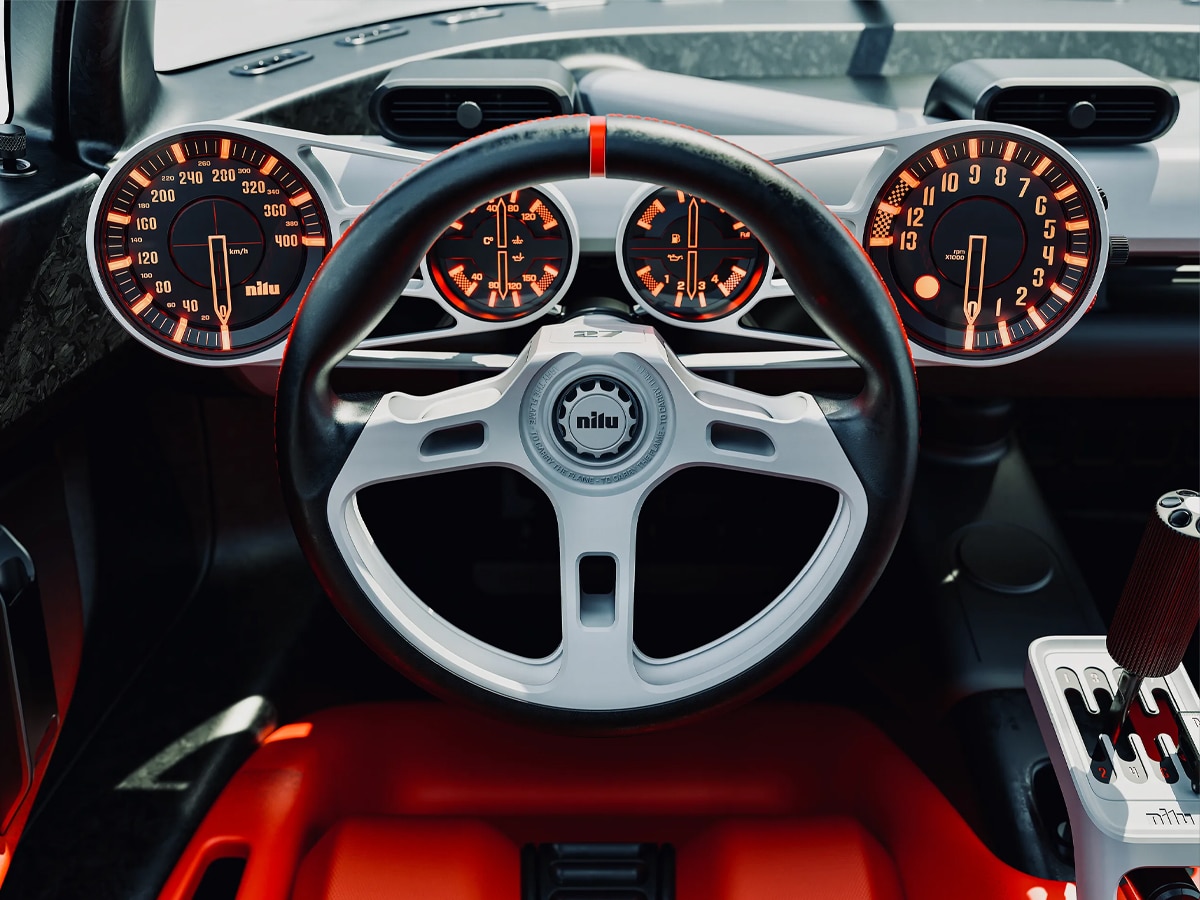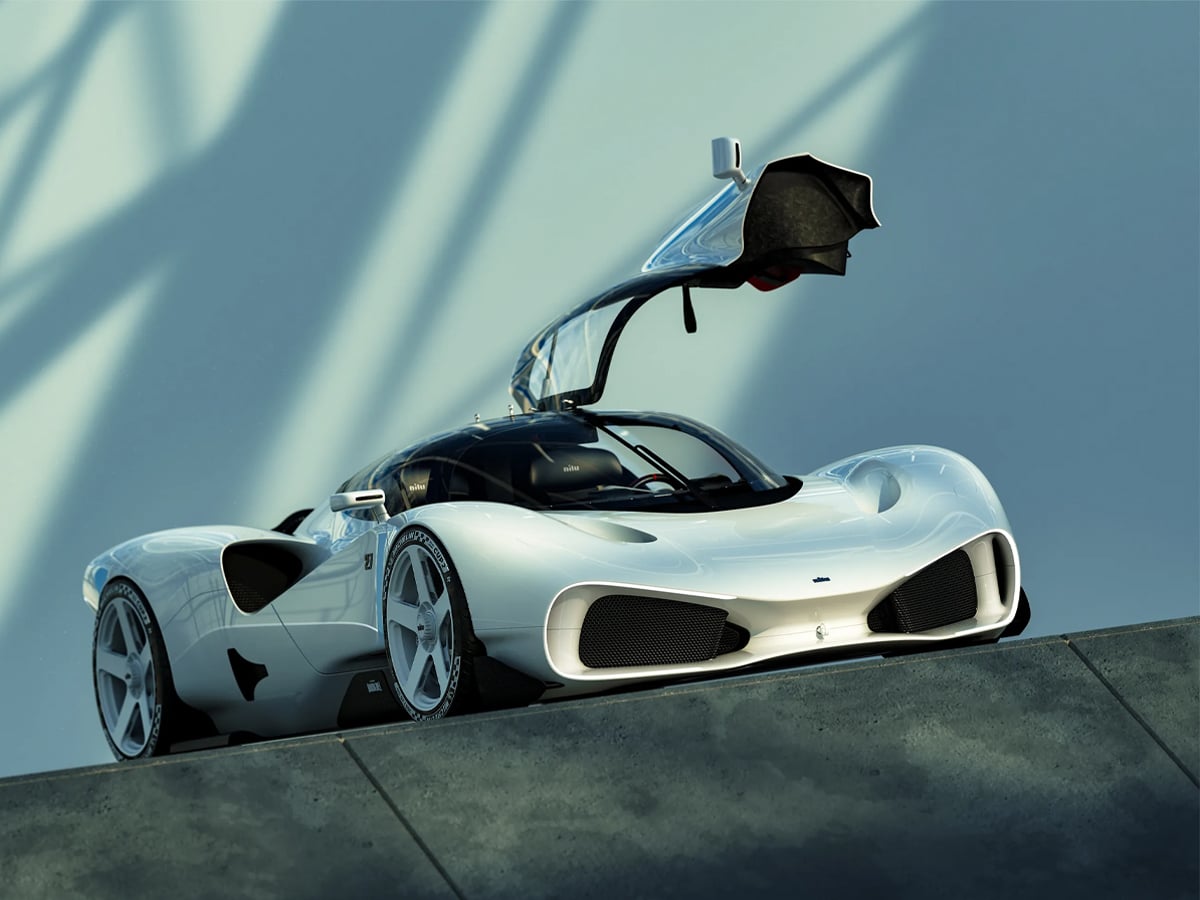
Published:
Readtime: 3 min
Every product is carefully selected by our editors and experts. If you buy from a link, we may earn a commission. Learn more. For more information on how we test products, click here.
After penning some of the most formidable lines in automotive design, you’d be forgiven for simply putting the cue in the rack and resting on your laurels. However, for Sasha Selipanov, the designer behind both the Bugatti Chiron and the Koenigsegg CC850, complacency is a dirty word. The revered sports car maker has again returned to the artist’s studio, this time conceptualising an extraordinary new hypercar that fuses heritage design with modern technology. Meet Nilu, a self-titled hypercar that promises to revive the analogue driving experience.
Designed as the antidote to the industry’s electric obsession, the new Nilu hypercar embraces tradition in a manner that we haven’t seen for some time. Admittedly, the vehicle’s 1,000 horsepower output isn’t likely to raise eyebrows when compared to some existing models on the market, but the analogue details and minimalistic design certainly will. It is a hypercar steeped in the core design philosophy of giving the driver the least possible distraction.

Nilu Interior Design
Analogue to its very core, the Nilu’s interior boasts a traditional side-by-side layout with gullwing doors, low sill heights, and fixed sunken seats. With no bevy of screens to pull focus, drivers are free to enjoy Nilu’s simplistic manual gearbox and a manual handbrake set-up in full, unadulterated glory. The only digital component here is the rearview mirror.
The steering wheel is compact and devoid of any controls whatsoever while there are not even drive modes. Instead, you get a wonderful 7-speed gated manual transmission, and everything else is manually controlled, including the steering wheel, pedal box, headrest, door mirrors and more. Peer closer and there is a whiff of Pagani with the cold-touch billet machined controls instead of the usual screens or touch surfaces.

Nilu Design
The design, whilst minimalistic, does have a few interesting touches, most notably with the futuristic exterior. The sleek and streamlined shape takes inspiration from ’60s F1 and Le Mans racers, classic Italian design houses and the Bauhaus “form follows function” philosophy.
There are various striking design features, with the gaping mouth and sinuous curves somewhat juxtaposed against the brutalist rear styling and exposed engine bay. Selipanov has thrown in a set of Michelin Pilot Sport Cup 2 R tyres, which arrive wrapped around period-correct centre lock rims.
Underneath all that lies a chassis featuring a bespoke carbon fibre monocoque with lightweight aluminium-alloy tubular subframes. Having considerable experience working on his previous hypercar projects, Selipanov’s latest effort features a compact roofline yet enough room on the inside with minimal drama.

Powertrain
The massive 6.5-litre V-12 with its 1,070 horsepower has been developed with Hartley Engines in New Zealand with no electrification in sight. Nestled in a “Hot V”, the conventional exhaust and intake positions are swapped around which means you get the look of the “snakepit” 12-into-1 exhaust headers. The entire exhaust system was 3D-printed in Inconel and you can imagine how good this V12 will sound when uncorked.
Nilu Hypercar Availability
The first batch of the Nilu hypercars will be produced in Irvine, CA with a planned production run of 54 units slated for the future. For those who want to skip the queue, the Nilu will be available in the CSR Racing 2 mobile racing game from November.









































Comments
We love hearing from you. or to leave a comment.